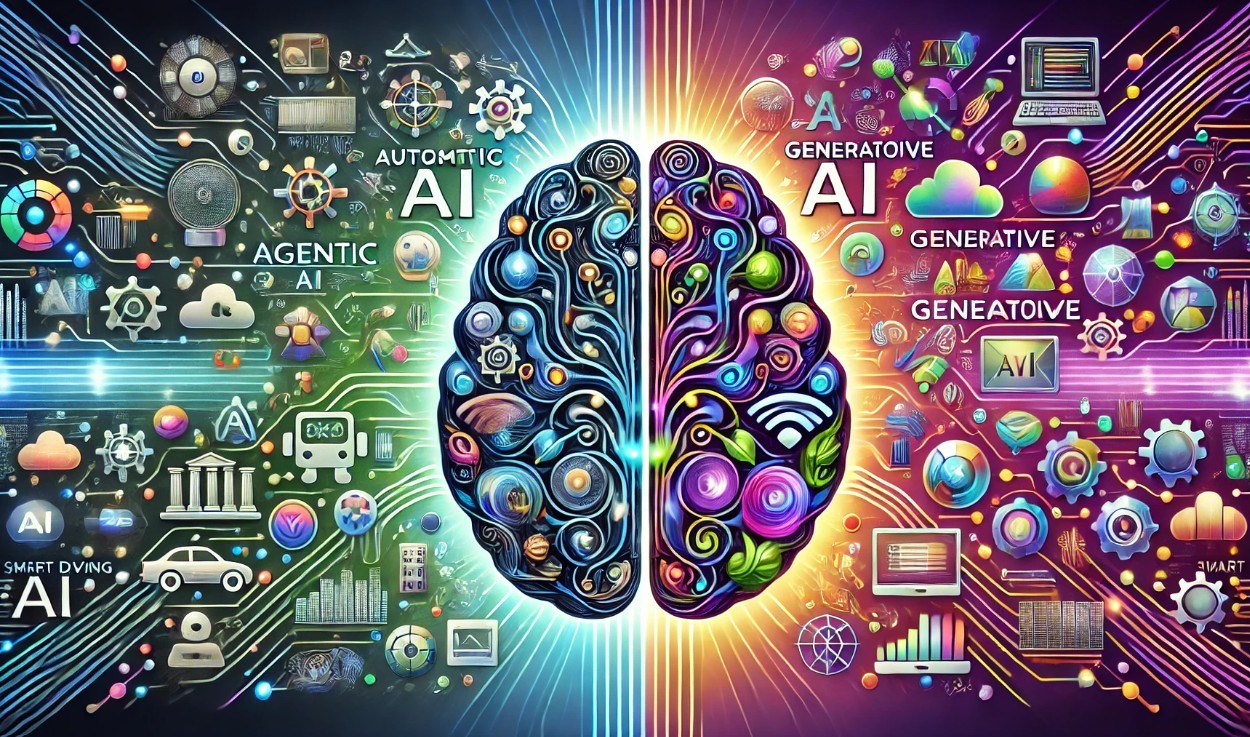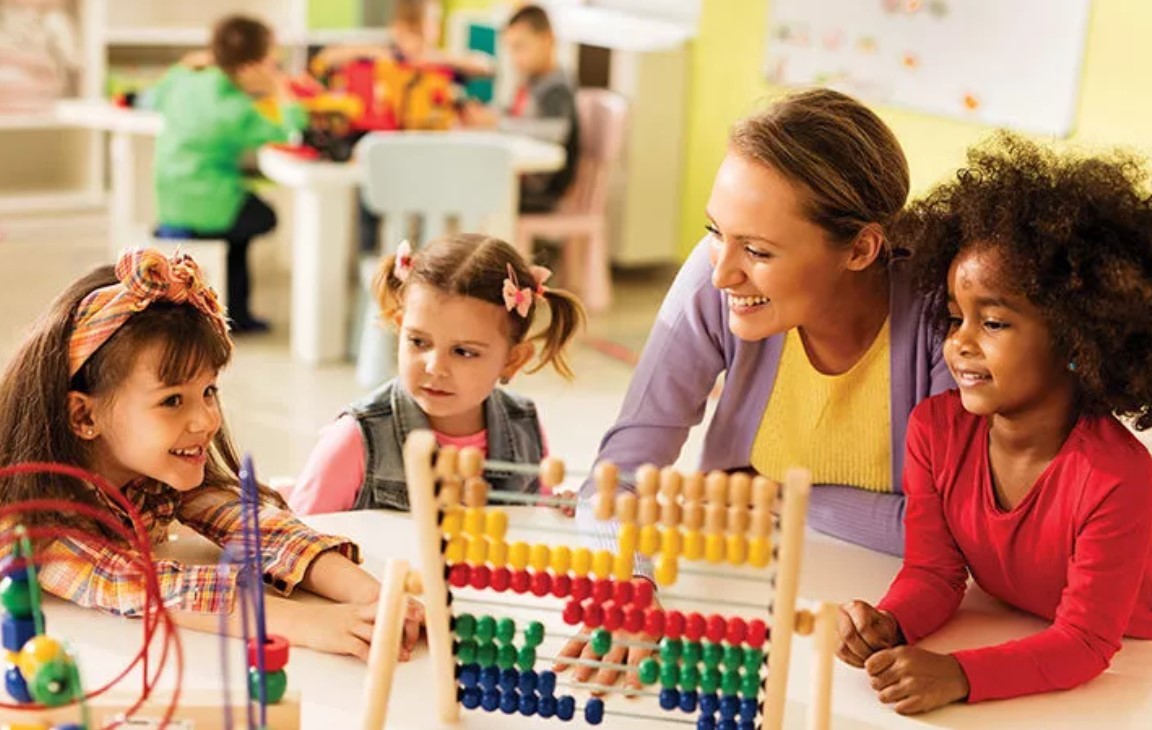What is B2B and B2C: Similarities and Differences
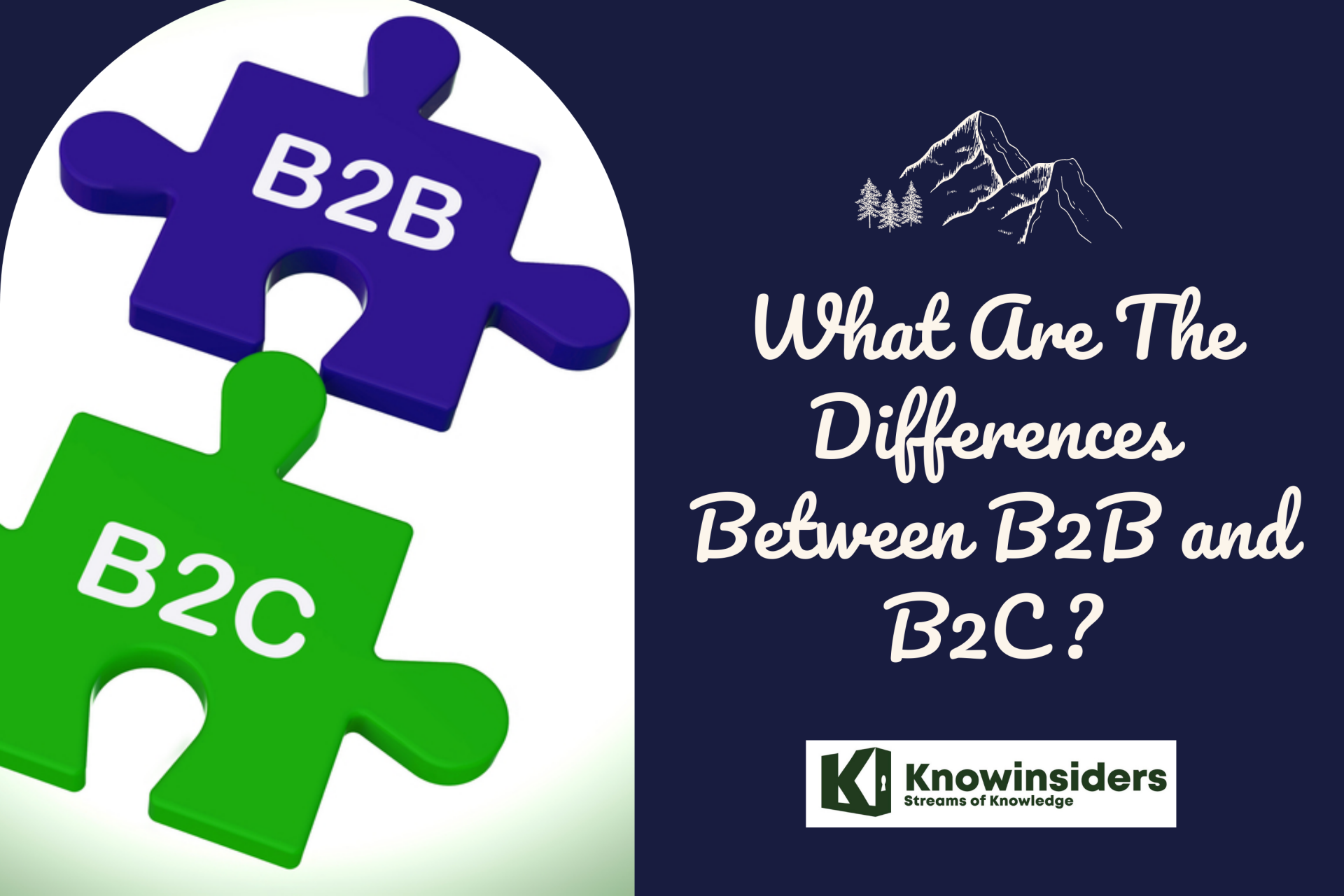 |
| Differences between B2B and B2C. Photo: KnowInsiders.com |
| Contents |
Experience in digital marketing will have exposed you to both business-to-business and business-to-consumer models. However, you might not be aware of the differences between business-to-business and business-to-consumer marketing. Marketing to other businesses (or B2B) typically targets rational, process-driven purchasing decisions, while marketing to consumers (or B2C) targets irrational, emotional purchases.
What does B2B mean?
A business-to-business transaction is one that occurs between two commercial entities, such as a supplier and a manufacturer, a manufacturer and a wholesaler, or a wholesaler and a retailer.
B2BDue to the large number of transactions, decision-making is quite challenging. Due to the small size of the target market, businesses in the business-to-business (B2B) sector focus on developing good personal relationships with the other party to the transaction.
For understanding B2B marketing, we will take an example of Shoe, How they come to the showroom and reach us?
To become footwear, leather must pass through a number of stages. The process of making a shoe begins with the merchants purchasing the raw materials from the suppliers, followed by cutting and machining, the creation of the shoe, and finally finishing. After that, they are distributed to the showrooms where we can purchase them after being packaged in boxes. In this illustration, several transactions take place in order to make a single pair of shoes. B2B begins with the purchase of the raw material and continues until it is delivered to the showroom.
What does B2C mean?
B2C refers to a transaction that takes place between a business and the final consumer. This could apply to any sales procedure where the company sells products and provides services directly to the customer.
B2CB2C decision-making is simple because there is only one step to the transaction and few people are involved. Since there are millions of consumers in the target market, it is important to convert shoppers into customers. These days, consumers can also buy goods online. This enables business to consumer transactions, as the consumer can choose the product online, order it, and the business will deliver it to the consumer's home.
For instance, buying clothes from a mall, ordering pizza from Domino's, paying for internet access, getting beauty treatments, etc.
What are the differences between B2B and B2C
Similarities of B2B and B2C
You might occasionally be confused between B2B and B2C because the two forms are similar. So let's first discuss their similarities before getting too caught up in their differences.
You may find that B2B and B2C marketing are the easiest to mix up. Direct customer communication is always encouraged by marketers, whether they work in B2B or B2C. Therefore, the target audience affects both B2B and B2C marketing strategies. Both types are aware that a consistent, customer-focused sales process is essential to gaining customers, and that creating customer loyalty is the ultimate objective. For effective marketing, whether you're a B2B marketer or a B2C marketer, you must recognize and define the buying personas of your customers (individual human customers for B2C and businesses for B2B).
Notably, both types must initially ensure that they have solutions for every customer who visits the business. Additionally, it is essential to continue the customer experience even after the sale. This is the perfect time to improve customer satisfaction and win their trust by offering top-notch after-sales support, which significantly increases sales for your business.
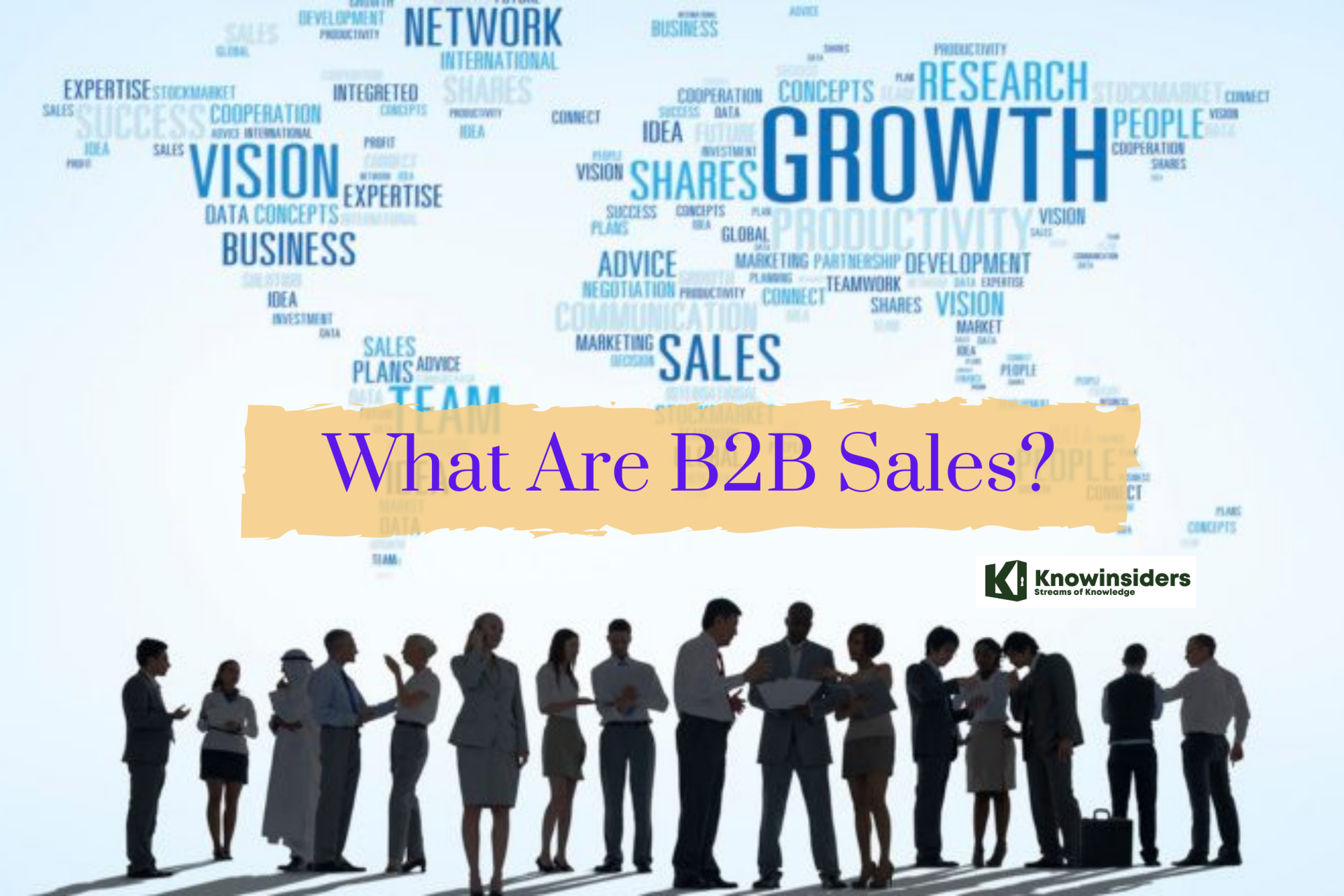 What Are B2B Sales: Types, Tips For Successful Sales What Are B2B Sales: Types, Tips For Successful Sales B2B is short for business to business. What are B2B Sales? To understand more thoroughly about this term, check out right below! |
Differences Between B2B and B2C
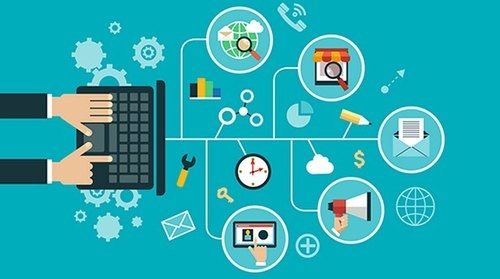 |
| Photo: IndiaMART |
B2B and B2C have a lot of differences. Let’s discuss critical differences together!
Different target audiences
Individual consumers who purchase goods and services for personal use make up the B2C target market. The consumers are regular people who fall into different categories. They are final consumers who never use the products they buy for later sales productions.
Compared to B2C, B2B has a more focused and significant audience. Product purchases are made by businesses of all sizes, including SMEs (small and medium enterprises), or organizations. Instead, they utilize it for internal or business needs. Due to the larger and more complex nature of B2B's products and services, it frequently has higher-value clients than B2C.
One of the clearest examples of how the target markets for these two business models differ is - When you visit a Mercedes Benz dealership to purchase a vehicle, you are doing business with the company as a B2C customer. You open a bookstore and buy the books from the publishers; this is a business-to-business transaction.
Decision-making process
Both sides make decisions in a different way. In comparison to B2B, the decision-making process in B2C is typically quicker.
Marketers in the B2B industry must deal with various distinct target groups and personas within a single company. B2B business owners must remember that there will be numerous parties involved in the purchasing process, making it more difficult than a B2C transaction. Depending on the type of purchases, a decision-making group that may include representatives from the technical, business, financial, and operational departments may have an impact on the final purchasing.
For instance, before choosing to buy components from a supplier, the purchasing manager of a car manufacturer may need to speak with the engineering, sales, and finance teams. The purchase involving a sizeable sum of money might need board-level approval.
The decision-making process is much more straightforward in B2C. It is a private purchase that primarily depends on the buyers' feelings.
Differences in marketing strategies
Although advertising, publicity, and promotion techniques as well as marketing channels may be similar in B2B and B2C marketing, there are differences in marketing strategies and how customers are informed.
Advertising in mainstream media, such as radio, television, or online magazines, is sufficient for B2C. B2B, however, might not benefit from it because corporate clients have their own specific channels that marketing must use. For instance, if you are selling supplements, advertising your goods on local radio stations, local TV channels, or daily newspapers will be beneficial since your target market is people who need supplements. If you work for a human resources agency, on the other hand, your clients are other companies that are unlikely to use radio or TV to find contractors.
Marketing strategies
Additionally, B2B clients are more logical, planned, and rational than B2C clients. B2B customers always give careful consideration to a particular return on investment (ROI) when making a purchase. Therefore, it is imperative to communicate with them rationally, offer them reliable information, and, ultimately, practical B2B solutions. Typically, emotional factors play a role in B2C customers' decision-making. Therefore, the message should be more emotive and the material should be enjoyable. For instance, while you're strolling down the street, a salesperson appears in front of you carrying a box of chocolates. After he sings a song you like, you decide to buy the chocolate box despite your initial reluctance.
To properly execute content marketing in both B2B and B2C, you should be aware of the differences.
Sales speed
Because B2C sales are made directly to consumers, they frequently occur more quickly than B2B sales. B2C sellers want the exchange to happen as quickly as possible. It implies that their products sell more quickly. A transaction takes longer in B2B. As I previously stated, there are many stakeholders involved in B2B decision-making, and numerous stages must be passed before the final purchase is made. Therefore, selling their products to B2B companies can be difficult and time-consuming. It may take several months from the time of increasing brand awareness to the time of leading nurturing and driving engagement to convert leads into customers.
Relationships with customers
B2B typically has closer client relationships than B2C does. The B2B market is smaller than the B2C market, and the potential customer base is also more limited. This makes generating leads in the B2B sector more difficult. B2B companies must establish a solid rapport with their customers. Customers will remain loyal to a company once they develop a relationship of trust with them and provide benefits.
In comparison to B2B, B2C relationships with customers are typically shorter and less loyal. As a typical illustration, many one-time purchases have been made in the B2C sector. Customers may buy clothing from one brand today, but they may switch to another brand tomorrow and never buy anything from that brand again.
Return on investment
Unlike B2C buyers, B2B buyers do not purchase goods to fulfill their needs or for pleasure. They invest in hardware, software, and services to enhance their production and operations. It lowers costs, enhances the customer experience, and ultimately boosts sales.
So it makes sense to say that a B2B transaction is an investment in productivity and profitability down the road.
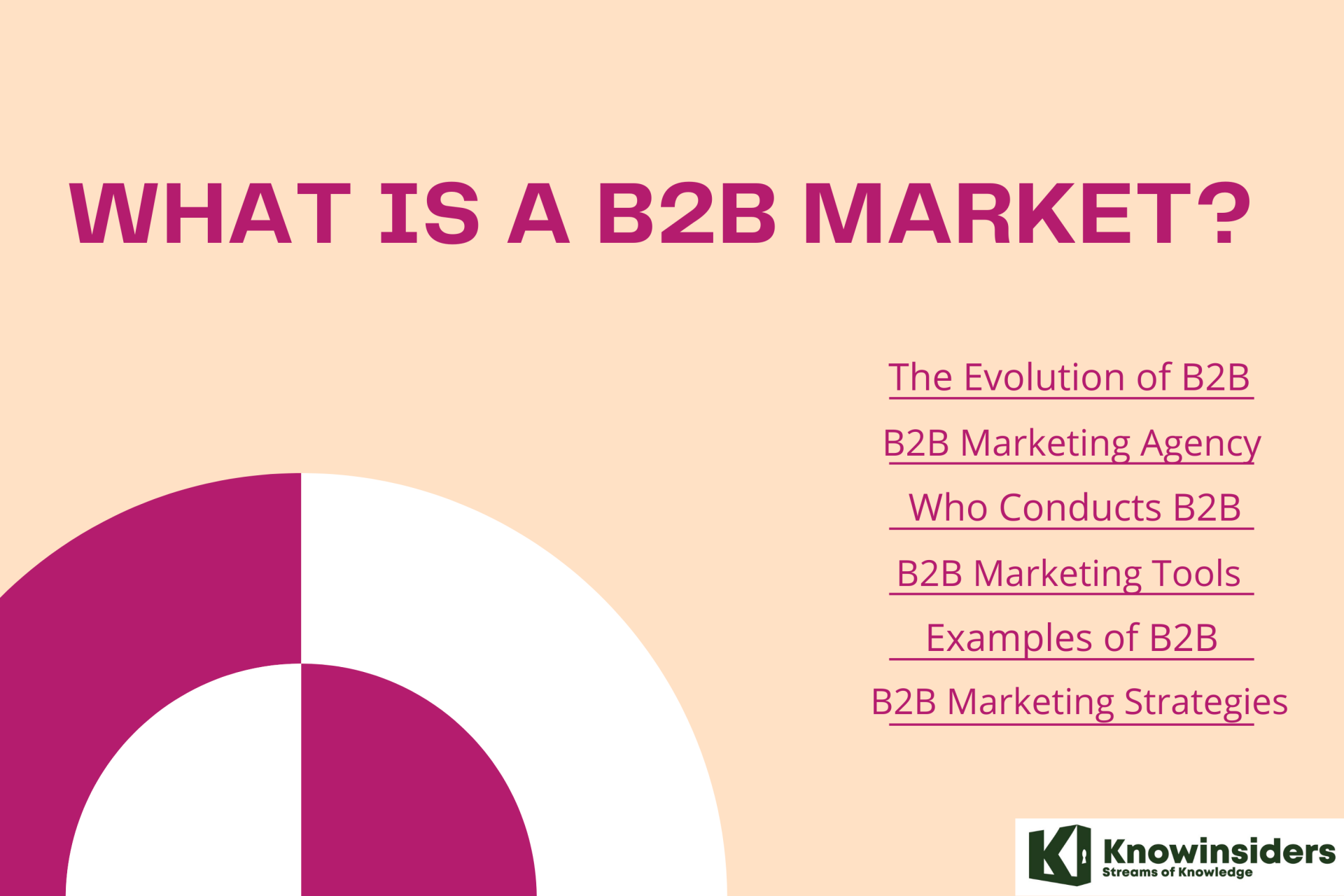 What Is A B2B Market and How Is B2B Marketing Important? What Is A B2B Market and How Is B2B Marketing Important? What is a B2B marketing? How important is B2B? If you want to learn about B2B marketing, let’s explore this topic of effective B2B marketing ... |
7 Key Differences Between B2C & B2B Ecommerce
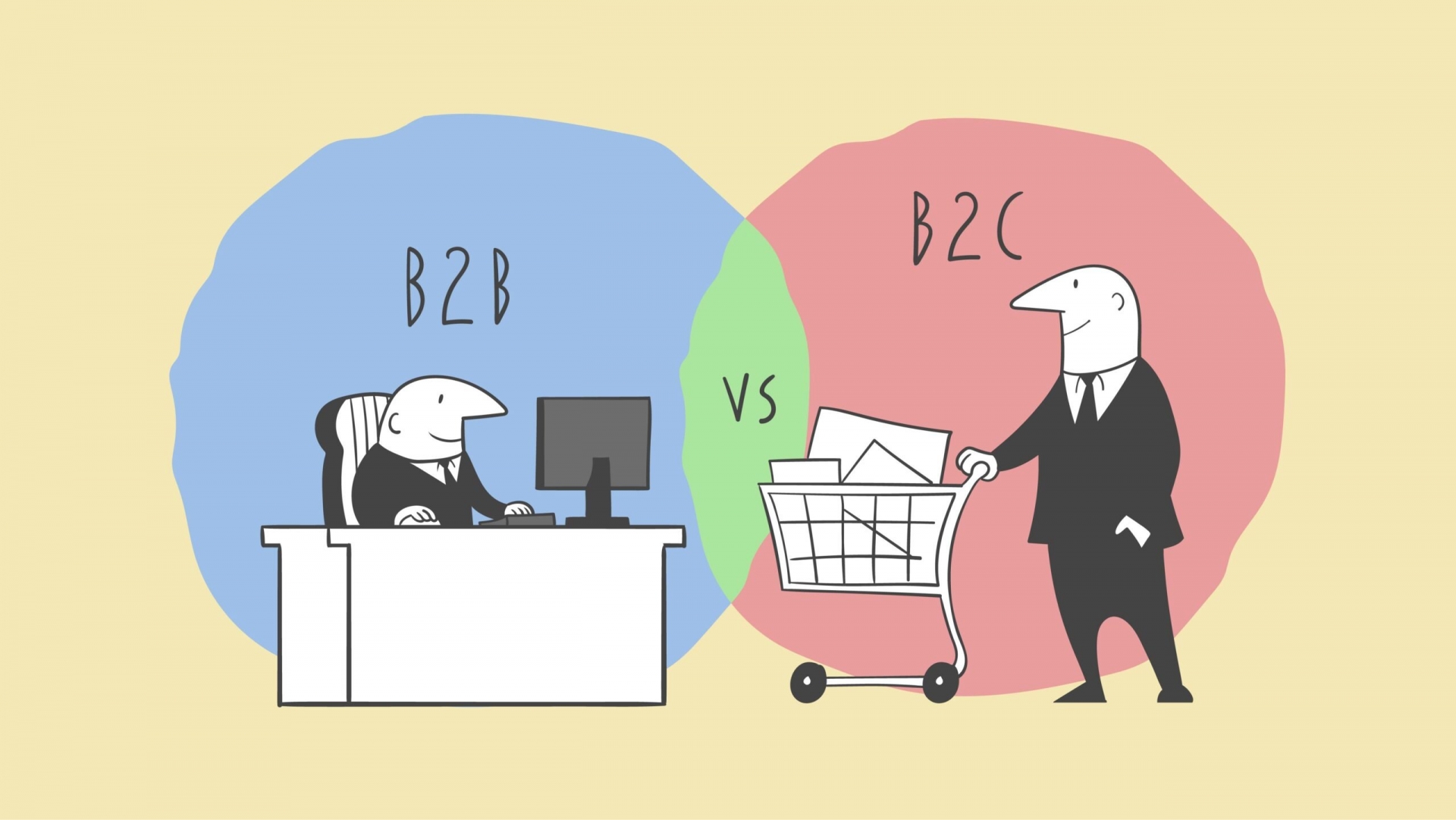 |
| Photo: Elegant Themes |
In the following section, I’ll look at some of the key differences between the B2C and B2B ecommerce sectors. We’ll look at things like purchase intent and the decision-making process, marketing, order values, customer lifecycle, and order fulfillment.
1. Buyer Intent and the Decision Making Process
Buying intent is one of the major distinctions between the B2B and B2C markets that many industry experts point out. We buy numerous little things as consumers. For instance, we might buy dozens of items at the grocery store. You'll probably buy a lot of things on impulse as you browse the aisles. Additionally, if a particular brand of milk is on sale, you might choose that over another.
Rarely do shoppers consider inexpensive purchases in-depth. This means that many cheaper B2C purchases are probably motivated more by desire than by necessity. With appropriate upsells, downsells, and a quick checkout process, you can increase the likelihood of impulse purchases as an online retailer. Through the website's User Interface (UI), you can see how Amazon tries to encourage impulse buys.
While you might buy something inexpensive without giving it much thought, expensive purchases usually receive more thought. For instance, before choosing which car to purchase, you will likely spend a few weeks — sometimes much longer — consulting experts, asking friends for advice, and reading reviews.
Products sold to businesses fall into this category of decisions that require more thought. The corporate structure is one factor in this. B2B transactions will need approval from an average of seven stakeholders, according to a 2017 study. In other words, more than one person will unavoidably be involved in the decision-making process.
You'll observe fewer sizable impulsive purchases in a rigid organizational structure. The return on investment (ROI) of the most expensive B2B transactions is considered, and the decision-making process typically adheres to a strict set of criteria that looks something like this:
* Explain the need.
* Assess the suggestions
* Decide on a vendor and complete the transaction.
For a business, the entire purchasing cycle—from determining needs to finalizing the transaction—takes much longer. The length of the transaction can range from a few weeks to a few years, depending on its size.
Smaller volume purchases are, of course, less taken into account. For instance, it's unlikely that you would spend months debating the best receipt paper to buy. However, there might be preferred vendors and limitations on which businesses a company can purchase from. So it stands to reason that when creating your business plan, buyer intentions should be taken into account.
2. Volume and Size of Transactions
The value of the global B2B market is 1.5–1.7 times greater than that of the B2C market. Average Order Values (AOV) are partially to blame for the difference in market size:
A B2B company's Average Order Value (AOV) is more than seven times greater than a B2C company's. For instance, a business internet router can cost thousands of dollars. The cost of a router is significantly lower for the typical consumer. Another thing to keep in mind is that a single B2B transaction can be worth millions of dollars, whereas B2C orders typically top out at the price of a luxury car or possibly a boat.
3. Customer Lifecycle
Many of the characteristics of the customer lifecycle model for B2B and B2C businesses are similar. You must raise awareness of your goods, pique interest in the solution, convince the customer to buy, and implement procedures to guarantee customer retention.
The support provided for lead nurturing is one of the key distinctions between B2B and B2C purchases. Ecommerce stores are likely to put more effort into direct sales and customer support because B2B purchases have a higher AOV.
An initial B2B purchase is likely to lead to years of future business in many industries. Therefore, a satisfied B2B customer has a much longer lifecycle than a B2C ecommerce customer.
4. Marketing Strategies
A company must match its marketing tactics to the requirements and decision-making processes of its target market. Let's examine some of the typical distinctions between the marketing approaches used by B2B and B2C ecommerce stores.
Funnel's apex
Top of the funnel activities (TOFU) concentrate on increasing customer awareness and interest. For both B2B and B2C businesses, online strategies that raise awareness and spur customer interest are content-driven. The goal of TOFU activities is to raise the site's organic search rankings, which will increase customer visibility.
In order to generate leads, business-to-consumer companies invest in appealing squeeze pages, landing pages, social media content, blog content, and more. Many B2C e-commerce businesses also spend money on TV and other forms of public relations. A good example are the Amazon TV commercials.
B2B companies also spend money on online reviews, podcasts, blog content, social media marketing, and other initiatives to raise awareness. In addition to these initiatives, B2B companies are more likely to generate interest and raise awareness through offline initiatives like tradeshows, offline marketing, and in-person demonstrations.
The Center of the Funnel
Activities in the middle of the funnel (MOFU) encourage customer consideration. The customer cycle is where B2C and B2B MOFU activities diverge most. MOFU content for a B2C customer might include activities like reading reviews, consulting with friends, and making a few trips to your website. Also, keep in mind that tracking your website's speed and fixing bugs is important for customer consideration.
MOFU is more likely to involve competitive analysis, price negotiation, conversations with internal stakeholders, and product demonstrations for B2B customers. Many transactions for expensive purchases take place offline. To find out more about the product, you might meet with salespeople.
Funnel's base
You try to make the sale during the Bottom Of The Funnel (BOFU) activities. Things like a fantastic user experience, a simple checkout procedure, and quick delivery times are crucial for B2C customers.
This step of the process can be time-consuming for B2B customers making significant purchases. It may entail creating and reviewing business proposals, contracts, setting payment terms, and completing service agreements. The BOFU phase also takes a lot longer for B2B transactions because contracts and service agreements must pass through several levels of approval.
5. Customer Assurance
The average order size is one of the key distinctions between B2B and B2C ecommerce, as we have previously mentioned. One fundamental rule of copywriting is that the more social proof is needed to persuade a person to buy, the larger the purchase will be.
You can observe this in action if you contrast a website like Amazon with a website like Alibaba. For instance, if you browse a listing on Alibaba, you can see all the specifications for the item being offered. Additionally, you can learn about the company that makes the product.
The product sales pages are lengthy. Along with excellent images of each product, you'll find comprehensive information about the ones that are being offered. Additionally, there is a messaging feature that enables you to get in touch with the supplier.
Without going through Amazon first, there is no way to message specific merchants on Amazon. First off, buyers of relatively low-value goods are less inclined to want to get in touch with suppliers. Second, businesses that sell such products are unable to cover the costs of providing customer support for items with low profit margins.
Of course, B2C businesses that sell expensive goods are likely to offer the same level of customer assurance that you would anticipate from a B2C e-commerce site. For instance, businesses like Tesla use lengthy sales copy for their product pages, which offers a great deal more details:
However, B2B e-commerce businesses that sell inexpensive goods do not have to offer their clients the same level of assurance. Cheap B2B product sales pages are typically concise and to the point.
6. Branding
One area where you notice a big difference between B2C and B2B ecommerce websites is branding. B2C retailers experiment with their branding in many ways more than B2B ecommerce sites. Consider the market for men's grooming.
Navy blue and a light brown are the muted corporate colors that The Dollar Shave Club uses. A B2B ecommerce website could use the company's brand colors and font. It does, however, things that a B2B site probably wouldn't allow. I'll use one as an illustration. Dollar Shave Club makes use of eye-catching and amusing imagery on their blog:
Although you may picture yourself reading the blog at home, those kinds of pictures are hardly appropriate for the workplace. If my employer saw me "researching" men's grooming trends while at work, he would undoubtedly give me some odd looks.
As a result, most B2B websites tend to be more traditional than their B2C counterparts. They must meet the expectations of their target audience with the content they produce, the imagery they use, and the brand colors they select. Sites from business to consumer are more varied. A website selling skater clothing will feel very different from a website selling punk clothing, for instance.
7. Order Fulfillment and Shipping
The order fulfillment process and shipping services used by B2B and B2C ecommerce companies share many of the same characteristics. Everyone who makes a purchase would like the product to be delivered safely and reliably, in the shortest possible time at the lowest cost.
Yet, the time consumers are willing to wait for a delivery, compared to businesses, is considerably lower in most cases. Amazon has provided consumers with the option of next day delivery for most products. Shipping expectations are changing in retail.
Any ecommerce store that is directly competing with Amazon faces the struggle of providing a shipping service that is as effective as Amazon’s. Free shipping is an important consideration for many consumers because Amazon offers free delivery for Prime customers (and, for many products, to all buyers).
Amazon has set expectations for the B2C industry that also impact the B2B sector. For example, if you buy supplies for your store, you might expect delivery within a 3-5 day period. However, for larger purchases, shipping time might be a less important factor than cost. For example, if you’re buying an industrial freezer for your business, you might be willing to wait three months for delivery if the product will cost $5,000 less than what you could purchase with next day delivery!
B2B sales vs. B2C sales: What’s the difference?
Business-to-business, or B2B, sales differ greatly from business-to-consumer, or B2C, sales.
In business-to-consumer (B2C) transactions, businesses sell goods or services directly to customers, who then make use of them. For instance, a clothing store sells items to customers directly so they can wear them.
When contrasting B2B and B2C sales, the following are a few key distinctions:
* There are more decision-makers involved: Unlike B2C sales, where a seller only needs to persuade one person to buy its product, B2B sellers must deal with a variety of stakeholders from various departments in order to close a deal. Additionally, a B2B sale now involves a greater variety of parties. The average number of people involved in a typical B2B sale increased from 5.4 in 2015 to 6.8 in 2017, according to the Harvard Business Review.
* The transactions are larger: In contrast to B2C sales, where one product may be sold to a single customer, business purchases typically involve multiple units at much higher prices.
* The sales cycle is longer: B2B sales do not involve impulsive purchases. A sale simply takes longer to complete as there are more parties involved and higher prices. In fact, nearly half (46.4%) of B2B sales to new customers take longer than seven months to complete, according to CSO Insights.
* Pricing is more nebulous: Typically, the typical customer agrees to a price and pulls out their credit card. However, in business-to-business sales, where a company makes a significant order, the pricing strategy is different. Customers anticipate haggling over prices before placing an order.
* There are more steps in the payment process. In a B2C transaction, the buyer typically makes an upfront payment before receiving the product or service. B2B clients anticipate paying after receiving the goods and receiving an invoice.
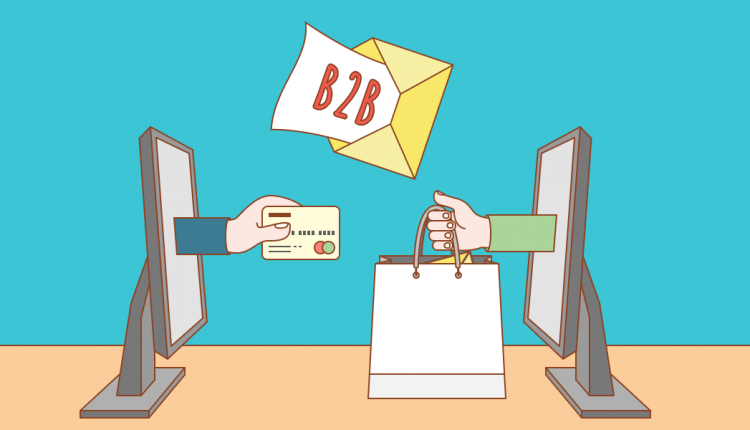 What Is B2B Marketing: Tools, Strategy and Future What Is B2B Marketing: Tools, Strategy and Future Marketing your products or services to businesses can be difficult. What is B2B Marketing? Check out the detailed answer right below! |
B2B vs B2C Marketing: 5 Differences
 |
| Photo: Five Channels |
1. Customer relationships
B2B: Build personal relationships
B2B marketing and lead generation focuses on building personal relationships that drive long-term business. So relationship building in B2B marketing, especially during the buying cycle, is crucial.
Why? You have the chance to demonstrate the standards of business conduct, morals, and ethics that you uphold. By being able to relate to your intended audience, you can distinguish your company or that of a client from rivals and develop your brand.
The generation of leads is the top priority for B2B companies. Building these personal connections can make or break a business because repeat and referral business are so important.
As search marketers, we frequently receive requests to attempt to hide negative Google reviews, which as you are aware can take a lot of work. You're hoping to completely avoid these negative reviews by forging sincere and meaningful connections, but reviews can be useful in other ways as well.
94% of customers read online reviews, according to G2Crowd. Considering that the majority of customers read reviews, a bad review can be extremely damaging. Negative reviews, according to 72% of B2B buyers, however, provide depth and insight into a product.
What? Negative reviews might actually be beneficial? Yes! A website may come across as fake and unreliable if it only has positive results. Never forget that there are people who dislike even the best of the best. You can adjust your business strategy in accordance with the reviews, both positive and negative, by responding to them. Additionally, you can demonstrate to the reviewer that you genuinely care and that you are a real person by responding to their needs and opinions.
B2C: Establish transactional relationships
B2C marketing's objective is to direct customers to products on your client's or your business's website and increase sales. For this to happen, the user experience on your website must be almost flawless.
Have you ever heard the saying "time is money"?
B2C companies prioritize efficiency so they spend as little time as possible getting to know their customers, which ultimately makes the relationship very transactional.
The goal of the marketing strategy is to sell the product, and most of the effort is put into producing top-notch goods as quickly as possible.
In contrast to B2B business, where reviews are buried by a flood of excellent, favorable reviews. This shouldn't be challenging if your company or client is B2C and the products you sell are of high quality. As a search marketer, you can encourage PR outreach by promoting it and by providing incentives for finished reviews.
Through email marketing or remarketing, a common strategy that has proven to be effective for B2C review collection is the use of store credit or personalized discount codes.
A customer would get an email or a pop-up asking about their experience after making a purchase or receiving their product. The main tagline would be, "Give us your feedback and receive 20% off next purchase!"
By giving your customers more, you can improve their future user experience and perhaps even create brand ambassadors.
2. Branding
B2B: Focus on relationships
B2B marketing includes branding, but it does so more frequently than in the B2C sector by fostering relationships. According to B2B International, branding starts with the consistency of how your products or services are presented and delivered.
Being able to convey your market position and let your personality shine can help promote brand recognition and lead generation in B2B search marketing.
Returning to relationship development, you must have a keen eye for market personalities. Your brand recognition and lead generation will increase if you can adapt your message to your target market.
B2C: Prioritize your message
Marketing requires branding because it enables the marketer to communicate clearly, build customer loyalty, establish credibility, establish an emotional connection with the customer, and persuade the customer to make a purchase.
Additionally, it is the top priority for B2C marketing.
Why? Because there isn't much interaction between customers and businesses, you need to give customers a memorable and satisfying experience if you want them to keep coming back.
Your success depends on your ability to clearly convey trustworthy messages and produce inspirational copy that connects with the target audience.
3. Decision-Making Process
B2B: Maintain open communication
You can also influence a business's rational and emotional decisions during the decision-making process. To decide whether a business relationship is a good fit for both parties, there is more open communication between businesses during the decision-making process for B2B.
Comparing your company's strengths to those of your rivals can help you stay one step ahead during this communication.
Business-to-business customers must weigh the needs of the organization or of each worker when making a decision. There are two types of motivations for these needs: rational and emotional.
Their financial minds are guided by the rational motivations. Is this a wise purchase for us to make?
Their emotional attachment to the business or specific employees is driven by emotional motives. Should I let someone or a group of people go? Will we incur losses and be forced to reduce employee benefits?
Both of these choices will eventually be significant enough to influence their choice.
Understanding your audience will help you, as a B2B marketer, comprehend their potential decision-making process. Delivering a message that is crystal clear and specific can put you ahead of rivals by fostering an emotional bond between the parties.
B2C: Simplify the process
You can begin utilizing their conversion funnel expertise in the B2C decision-making process to maximize ROI. A B2C marketer must be able to produce persuasive advertisements that convince consumers they need a product at the top of the conversion funnel.
The consumer already knows exactly the kind of product they are looking to buy once they have identified a need. When deciding which product to purchase, consumers are much more flexible than B2B companies.
As a marketer, it is crucial to keep appealing to consumers and finding ways to help them find what they want by making the decision-making process easier. Consumers frequently check out your competitors to see if they can find comparable products more quickly and for a lower price unless they have already made up their minds to buy your product.
Finding focus keywords that customers will use to search for comparable products is crucial for search marketers who want to rank for those terms. The higher you rank, the more likely it is that you will attract repeat visitors to your website.
We can potentially target three sets of keywords to attract their attention when analyzing the conversion funnel.
For instance, if a customer wants to learn more about electric bikes, they might type in a long-tail variation of the term "electric bikes" like "what is an electric bike."
Once a customer has learned more about electric bikes, they might want to find out more about reliable, high-quality electric bike brands. They'll therefore do a search for "best electric bikes" next.
They may locate the precise brand they want to buy from after searching through the various brands, at which point they are prepared to make a purchase. Thus, they perform a search for "[insert brand] electric bike."
To increase your chances of attracting potential clients in the market, as a B2C search marketer, make sure that all of these areas of the conversion funnel are covered and targeted by blogs, core pages, and product pages.
Remember that no matter how effective your conversion funnel is, if your checkout process is complicated, it may drive away customers and open the door for competitors to steal them. Work toward the conversions you're after by streamlining your conversion processes and reducing their complexity.
4. Audience Targeting
B2B: Find your niche
B2B companies typically operate in a specialized field, so knowing the characteristics of your target market is crucial. Collect and analyze precise data in order to draw them in.
Your data focus can take a variety of qualitative and quantitative forms. Google Analytics and keyword research are two of the more successful methods for gathering data. However, going to Google and analyzing the search engine results pages for your keywords is the best way to figure out who your target audience is.
You can guess what kinds of searches specific people are conducting by actively browsing the SERP and observing what the user's intent is for various keywords. You should have a general idea of who your target market is by combining your findings from SERP analysis with keyword research and Google Analytics demographic data analysis.
With the help of this information, integrated advertisements that are targeted to particular demographics and keywords can successfully develop a lead generation strategy.
For B2B marketers, lead generation is their main objective. To reach your top prospects, it is essential to create a top-of-funnel prospect list and then implement a highly integrated remarketing and lead generation marketing funnel.
B2C: Follow the funnel
In contrast to B2B companies, B2C companies operate in a much larger and more dispersed market. When acquiring customers, search marketers place a lot of emphasis on using the marketing funnel.
Cast a wide net and try to collect some qualified top-of-funnel leads by pushing advertisements that are biased toward emotional and product-driven purchases at the top of the funnel. You can create a warm lead list and remarket to those people in the hopes of generating sales from those leads by studying the demographics of the top-of-funnel leads.
Implementing highly successful CRO strategies is another crucial audience targeting strategy emphasized in B2C. In B2C businesses, using simple but powerful conversion funnels, compelling copywriting, and well-designed, easy-to-navigate landing pages can change the way customers buy.
5. Ad copy
B2B: Learn the lingo
B2B companies are much more likely to want to buy services or goods from a professional who is familiar with their jargon, procedures, and even the choices they must make when making a purchase.
Speak their language to reach your target audience!
For instance, a B2B company that sells $50,000 worth of software does not concentrate on crafting fluffy copy that persuades the reader to make an impulsive purchase of their software. Instead, the copy should emphasize instilling confidence in the potential customer and removing emotion from the decision.
The company—or more precisely, the director or manager in charge of making the purchase—is investing in the software to raise the organization's general performance. Even though they may have personal motivations for making the purchase, they must set aside their emotions and consider both the advantages and disadvantages of their choice.
B2C: Write emotional ads
Contrary to B2B companies, B2C companies must employ a relatable voice to persuade customers to click on an advertisement. Instead of using industry jargon that might make a customer turn away, you can speak in the customer's voice by using more plain language.
Consumer emotion should be evoked in B2C copywriting. For instance, a person looking to buy a $200 bicycle will take less time to decide than a company looking to buy a $50,000 piece of software.
The copy and content should evoke feelings of joy and excitement because the buyer of the bicycle wants to enjoy the purchase.
Give this a ton of weight because something as basic as the ad copy can make or break an advertising campaign. Be judicious!
 How To Start An Online Business: Best Ideas and Tips For Success How To Start An Online Business: Best Ideas and Tips For Success Starting an online business sounds a good idea in the time of the pandemic. How to start a good one? |
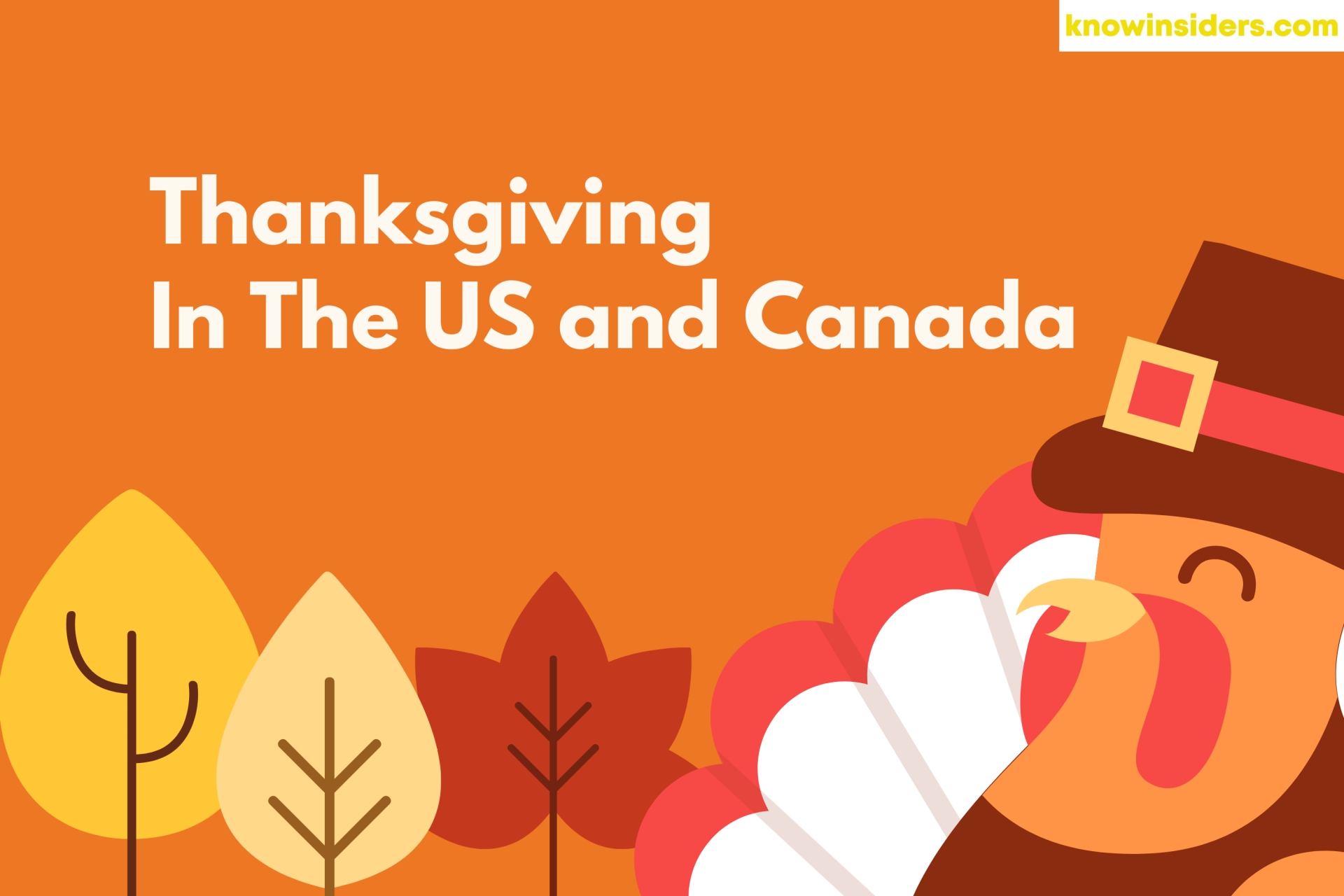 Thanksgiving In The US and Canada: Meaning & Differences Thanksgiving In The US and Canada: Meaning & Differences Thanksgiving is a big holiday in the US and Canada. Bu there are some differences between Thanksgiving from the two countries. Read on to know ... |
 Legal Drinking Age in India: Each State has a Differences and Restrictions Legal Drinking Age in India: Each State has a Differences and Restrictions Delhi Cuts Drinking Age To 21. Here is a list of legal drinking age in some of the states and UTs in India - Each ... |

